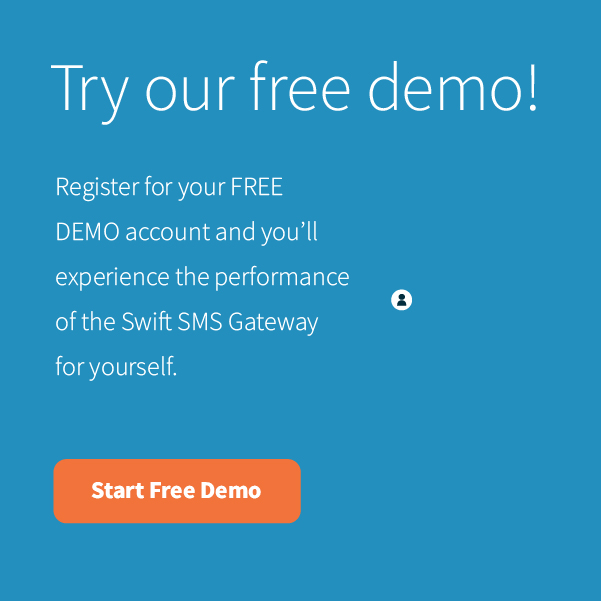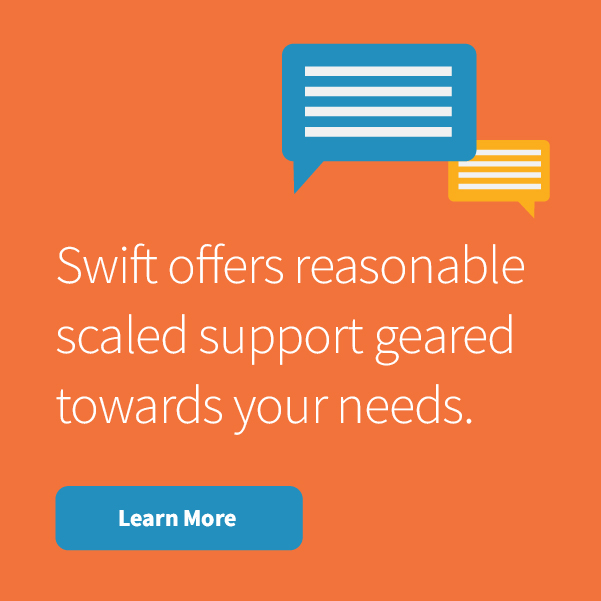Today's eCommerce landscape is fast, mobile and more competitive than ever. Customers are always on — browsing, buying and making decisions in real time. That means your brand has a very narrow window to reach them, and even less time to make an impact.
As attention spans shrink and inboxes overflow, brands need a better way to cut through the digital noise. And increasingly, that means turning to text messaging.
Mobile isn't just one of the channels anymore — it's the channel. Whether consumers are checking in on orders or looking for a flash sale, they now expect updates to be instant, relevant and tailored to them. That's where eCommerce SMS marketing thrives: it's direct, opt-in and deeply personal.
In this guide, we'll walk you through the strategies, tools and legal considerations needed to launch or improve your SMS marketing efforts — and turn simple texts into serious revenue.
Why SMS Marketing Is a Game-Changer for eCommerce
In eCommerce, speed, relevance and connection matter more than ever. Consumers are constantly on their smartphones. In fact, the average person now spends over five hours a day on their mobile device.
With almost 62% of internet users accessing the web via mobile, the smartphone has become the gateway to customer attention — and expectations are shifting accordingly.
Shoppers want instant updates, low-friction interactions and messages that feel personal, not promotional. SMS marketing meets those expectations head-on, giving eCommerce businesses a direct, trusted channel to their audience..
And customers are not just open to it — they're asking for it:
- 58% say SMS is the fastest way for a brand to reach them
- 91% want to text back and forth with businesses
- SMS open rates reach 98%, with response rates as high as 45%
Unlike email, which typically sees a much lower open rate and click-through rate, or push notifications that often get swiped away unread, SMS delivers unmatched immediacy and engagement.
And the payoff reflects that. During major retail events like Black Friday, some eCommerce brands often achieve major returns from SMS campaigns — a level of ROI that few other channels can rival.
Building Your Foundation: Strategies for Growing and Segmenting an SMS List for eCommerce
Before an SMS marketing campaign can deliver results, you need a solid foundation — a well-maintained SMS list and a smart segmentation strategy. But striking the right balance between compliance and engagement is key. Today's consumers expect control over how brands communicate with them.
Meeting that expectation while growing a responsive subscriber base requires both strategic planning and a customer-first mindset.
Here's how to build a compliant, high-performing SMS list — and how to segment it to deliver the right message to the right shopper at the right time.
1. Offer meaningful incentives
Encourage opt-ins by offering something of value upfront. Whether it's an exclusive discount, early access to new products or members-only perks, giving people a reason to join your list works. As we noted in this article on how SMS can drive retail sales, these offers often yield immediate conversions.
2. Use layered website forms
Multi-step forms that first collect email addresses and then prompt for phone numbers see higher conversion rates. Website pop-ups can be effective when they're timed or behavior-based — such as showing up after a user adds an item to their cart.
3. Promote across other marketing channels
Your SMS program shouldn't exist in a vacuum. Use your email marketing campaigns and social media presence to invite customers to subscribe. Create short, compelling messages that explain the benefits of joining.
4. Make it feel exclusive
Position your SMS list as an insider channel. Be transparent about how often subscribers will hear from you, what kind of promotional SMS they'll get and the types of perks they'll unlock. As highlighted in this piece on holiday SMS campaigns, a little exclusivity goes a long way.
5. Think beyond digital
Offline tactics matter too. Use QR codes in-store or at events to encourage sign-ups. You can also run contests or giveaways that require SMS opt-in for entry, driving both engagement and list growth. For businesses offering pre-orders, let shoppers sign up for eCommerce SMS updates on product availability — a high-value use case explored in this post about SMS benefits for eCommerce businesses.
6. Use short codes for easy opt-in
Short codes make it simple for customers to subscribe via text. They're easy to remember and can be promoted across physical and digital channels. Learn how to get started in this step-by-step guide to short codes.
Segment Your List for Smarter Targeting
Segmenting your SMS subscribers is what turns mass messaging into marketing automation — boosting open rates, click-throughs and conversions while keeping content relevant.
Here are some segmentation ideas tailored for eCommerce:
- New vs. loyal customers: Welcome new subscribers with a discount, while loyal shoppers might get VIP perks or early product drops.
- Cart abandonment status: Trigger follow-up texts for those who left items behind, especially if they've previously shown high purchase intent.
- Engagement history: Tailor messages based on how often customers interact with your texts or click your links.
- Channel preferences: If someone often engages with text messages over email, prioritize them accordingly — or use both to complement each other.
- Geographic location: Perfect for location-specific deals, shipping updates or local event invitations.
- Purchase frequency or total spend: Identify high-value customers and treat them like insiders with personalized offers and exclusive early access.
An engaged SMS list is one of the most powerful tools in your eCommerce marketing toolkit. But without thoughtful segmentation and clear value for subscribers, it's easy to fall into the trap of bulk SMS marketing that feels impersonal or invasive.
Build with care, and your list will reward you with higher ROI and deeper customer relationships.
Navigating the Legal Maze of Text Messaging
For eCommerce brands, SMS marketing is one of the most powerful ways to connect with customers — but only if it's done right. As personal as a text message might feel, the legal requirements behind sending them are anything but casual. Navigating compliance is critical not just to avoid fines, but to protect trust and long-term deliverability.
And, beyond legality, today's consumers expect transparency. They want control over how, when and why you contact them. Getting consent right — and responding to opt-outs quickly — isn't just regulatory hygiene; it's good customer experience.
Let's break down the legal environment shaping SMS marketing strategy in 2025 and how eCommerce businesses can stay on the right side of it.
What U.S. Businesses Need to Know: TCPA, Consent & Timing Rules
In the United States, the Telephone Consumer Protection Act (TCPA) governs how and when businesses can send marketing messages and notifications to consumers. This regulation applies whether you're sending a one-time SMS message or a full-scale SMS marketing campaign.
Key TCPA compliance requirements include:
- Express written consent before sending promotional text messages
- Clear and conspicuous opt-out instructions
- Transparent messaging about frequency and purpose
- Limits on when certain types of messages (like abandoned cart reminders) can be sent — typically within a 48-hour window
In 2024 and 2025, several updates have reshaped these expectations. The do-not-call registry was formally extended to cover SMS, and a new 1:1 consent rule goes into effect January 2025, requiring a more direct, traceable consent process for messaging.
Additionally, from April 2025 onward, businesses must honor opt-out requests made through any reasonable means — not just "reply STOP" — within 10 business days. This change significantly impacts backend systems and workflows for eCommerce brands that rely on automation.
You can explore these regulatory shifts and what they mean for text messaging at scale in this deeper guide on FCC text message regulations.
Canadian Considerations: Anti-Spam Law Still Applies
If your eCommerce store operates in Canada or serves Canadian customers, CASL (Canada's Anti-Spam Legislation) is the primary regulation you need to follow. It shares many similarities with the TCPA:
- Prior consent is required
- Business identity must be clearly disclosed
- Unsubscribe options must be simple and immediate
Whether your messages are transactional or promotional, CASL compliance is essential to avoid fines — which can be significant. A proactive approach to marketing automation settings, contact segmentation and recordkeeping is key.
SMS Verification and Accountability
To reduce risk and bolster trust, many eCommerce companies now implement SMS verification as part of their onboarding or checkout process. This serves as a form of multi-factor authentication, but it also helps reinforce user consent — which is especially useful under newer TCPA rules.
Verification messages also double as an opportunity to confirm opt-ins, streamline communication and validate numbers before launching into full SMS marketing automation.
Crafting Messages That Convert: Developing an Effective SMS Marketing Strategy
A great SMS strategy sparks action. Whether you're running a holiday promotion, nudging a shopper to finish checkout or simply saying happy birthday, every text message marketing campaign should have one clear goal: delivering the right message to the right person at the right time.
In a landscape where attention spans are fleeting and inboxes are overcrowded, SMS cuts through. But to make the most of this high-impact marketing channel, eCommerce brands need to be intentional — not only in what they send, but how.
Build Your Core Campaigns: Proven SMS Message Types
Here's a breakdown of high-performing SMS marketing messages that eCommerce brands can build into their SMS marketing automation workflows.
- Welcome series: Start strong with a warm greeting and a welcome discount (e.g., "Thanks for joining us! Here's 10% off your first order."). Include your brand's tone and tell subscribers what they can expect.
- Flash sales and limited-time offers: Short, time-sensitive promotional messages create urgency. Example: "Ends tonight! 25% off sitewide — grab your favorites before midnight."
- Birthday or anniversary perks: Reward loyal customers with a personalized gift or discount on special dates.
- Abandoned cart reminders: Send a gentle nudge like, "Hey, you left something behind! Complete your order now and get 10% off."
- Product launch announcements: Tease upcoming releases or send a direct link to buy as soon as the new item drops.
- Back-in-stock alerts: Notify subscribers when high-demand products return — a great way to drive quick conversions.
- Loyalty program updates: Let users know when they've hit a new tier, earned points or have a reward waiting.
- Holiday and seasonal campaigns: Tie your promotions to cultural events (Mother's Day, Cyber Monday, local holidays) with timely content.
- VIP access messages: Offer early shopping windows or exclusive product previews to your most valuable customers.
- Interactive content: Polls, quizzes or two-way SMS threads can drive engagement and gather useful data while making messages feel more human.
- Personalized product suggestions: Use past browsing or purchase behavior to deliver targeted recommendations.
- Transactional and service messages:
- Shipping and delivery updates
- Appointment confirmations or reminders (especially for beauty, health or lifestyle eCommerce brands)
- Payment notifications or billing reminders
- Customer service responses and updates
- Feedback requests post-purchase ("Tell us how we did!")
And, to make your text message content compelling, keep these core copywriting principles in mind:
- Be concise: Stick to one clear CTA. One message = one action.
- Sound human: Drop the corporate speak. Write like you'd text a friend (but keep it professional).
- Add urgency: Phrases like "Last chance" or "Today only" perform well — just don't overuse them.
- Use formatting strategically: Emojis or capital letters can draw attention, but use them sparingly.
- Avoid SMS fatigue: Frequency matters. Respect user preferences and monitor opt-out rates.
- Test and iterate: A/B test copy variations, timing and CTA phrasing to see what resonates.
A well-crafted SMS marketing message can boost customer engagement, drive sales and improve the overall customer experience — all in under 160 characters. When your eCommerce business treats every SMS like a valuable touchpoint, you build connection, not just conversion.
Better Together: Integrating Text Messaging With Social Media and Other Channels
SMS marketing is most effective when it works with your other marketing efforts, not in isolation. By syncing your text messaging with email, social media and even web campaigns, you create a more connected and compelling experience across the entire customer journey.
The following smart pairings tend to drive great results:
- SMS + Email: Use text messages to remind subscribers about important emails (e.g., flash sales, new arrivals). Or flip it — promote your newsletter via SMS to drive cross-channel engagement.
- Split the message: Deliver urgent alerts or last-minute updates via SMS while using email for long-form content or product storytelling. Each channel plays to its strengths.
- Abandoned cart sequences: Follow up an abandoned cart email with a time-sensitive SMS, especially effective when combined with a small incentive.
And, even if it feels a bit unexpected, SMS can help boost your social media strategy. For example, you can:
- Announce live events or product drops on platforms like Instagram or TikTok
- Share links to new content, contests, or giveaways
- Drive urgency for UGC campaigns with SMS reminders
By meeting customers across multiple touchpoints — and matching message formats to how people use each platform — you increase both visibility and conversion without relying on just one channel.
The key is to understand the context of each channel. A text message grabs attention quickly. Social content engages. Email informs. Together, they create a layered, memorable customer experience.
Learning From the Real World: How Text Messages Swoop in as Organic Reach in Search Keeps Dropping
Digital marketing has changed. As AI-powered search tools like Google's Search Generative Experience (SGE) and conversational interfaces become more common, businesses are finding it harder to rely on traditional search engine optimization alone. The visibility they once earned through organic search is increasingly filtered through AI summaries that reduce direct traffic and disrupt once-reliable lead pipelines.
Meanwhile, organic reach across social platforms is also in decline. As The Diary of a CEO host and entrepreneur Steven Bartlett recently revealed, his company has seen a 50% year-over-year drop in organic reach — prompting a strategic pivot toward mobile-first, direct communication channels like SMS and email. This shift isn't limited to influencers or content creators — eCommerce brands are responding similarly, leveraging SMS marketing to reclaim control over how and when they connect with customers.
SMS as a Direct Line Amid Uncertainty
Unlike social media algorithms or search engine updates, text messaging places you directly in your audience's inbox — no filters, no rankings, no platform dependency. As businesses face decreasing ROI from SEO and social alone, many are turning to SMS campaigns to maintain consistent reach and engagement.
- SMS open rates average 98%, with click-through rates as high as 35%, which makes it a dependable channel even as other platforms falter.
- Brands are combining SMS with email marketing automation and social efforts to deliver multichannel touchpoints that don't rely solely on discoverability.
- AI-powered agents like Salesforce's Einstein Service Agent are also being deployed via SMS, helping businesses offer responsive support and personalized updates at scale.
By treating text message marketing as part of a proactive, owned-media strategy — rather than a reactive tactic — eCommerce brands can future-proof their communications and stay connected in a world where reach is no longer guaranteed.
It's Time To Boost the Customer Experience in Your Store – With SMS
Text messaging is fast becoming one of the most effective ways for eCommerce businesses to drive engagement, conversions and loyalty.
From abandoned cart reminders and flash sale announcements to shipping updates and VIP offers, SMS gives you the power to reach your customers instantly, on the device they use most. It's personal, it's direct and with open rates near 98%, it works.
Better yet, SMS marketing is:
- Compliant and opt-in-based, making every message a welcome one
- Scalable and automated, saving time while staying personal
- Easy to integrate with your current eCommerce and CRM platforms
- Proven to boost conversion rates and retention
If you're ready to turn high-intent traffic into lifelong customers — and do it with smarter communication — Swift SMS Gateway makes it easy. With flexible APIs, fast onboarding and global reach across 800+ carriers, you'll have everything you need to start sending effective, compliant messages today.


